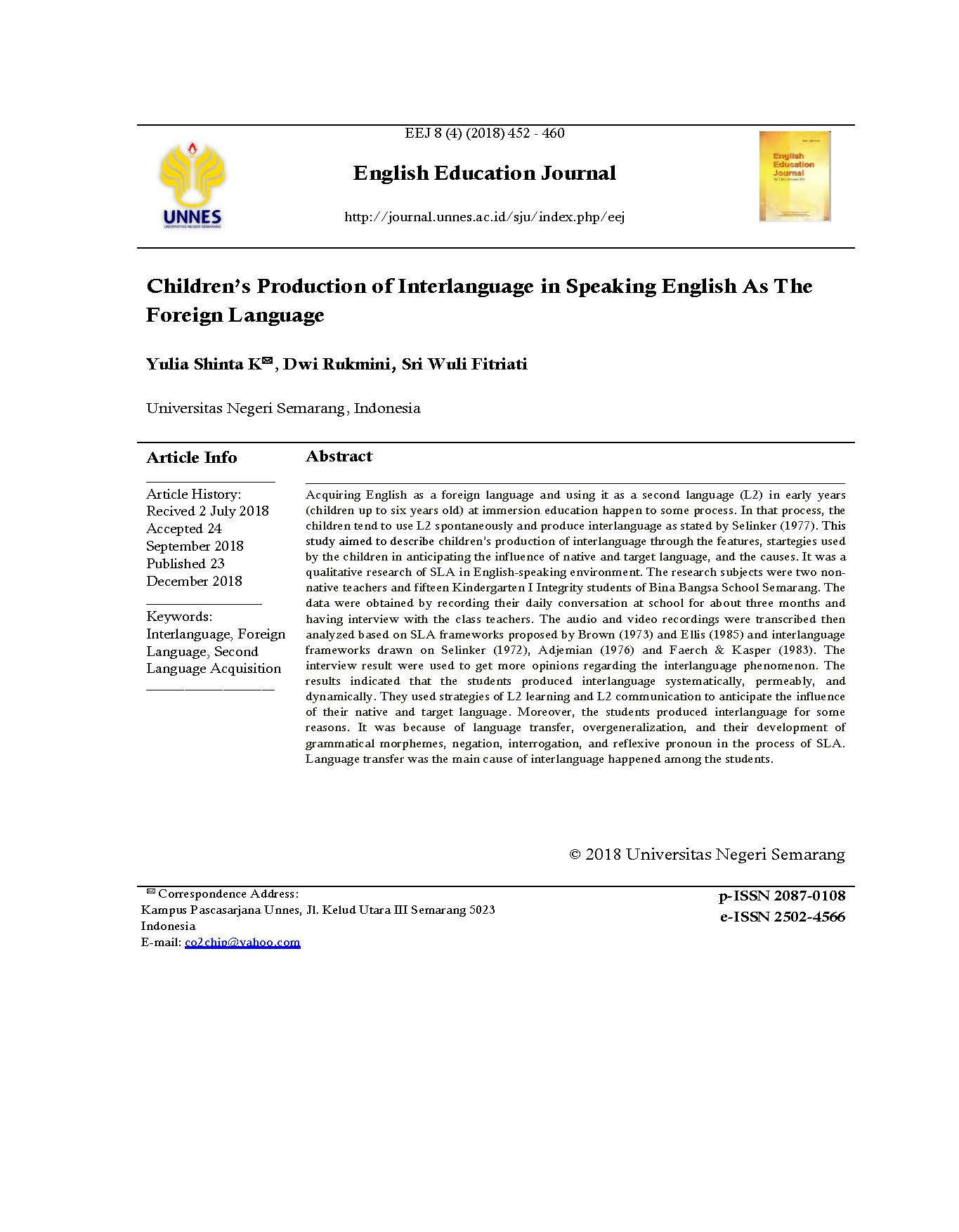Children’s Production of Interlanguage in Speaking English As The Foreign Language
##plugins.themes.academic_pro.article.main##
Abstract
Acquiring English as a foreign language and using it as a second language (L2) in early years (children up to six years old) at immersion education happen to some process. In that process, the children tend to use L2 spontaneously and produce interlanguage as stated by Selinker (1977). This study aimed to describe children’s production of interlanguage through the features, startegies used by the children in anticipating the influence of native and target language, and the causes. It was a qualitative research of SLA in English-speaking environment. The research subjects were two non-native teachers and fifteen Kindergarten I Integrity students of Bina Bangsa School Semarang. The data were obtained by recording their daily conversation at school for about three months and having interview with the class teachers. The audio and video recordings were transcribed then analyzed based on SLA frameworks proposed by Brown (1973) and Ellis (1985) and interlanguage frameworks drawn on Selinker (1972), Adjemian (1976) and Faerch & Kasper (1983). The interview result were used to get more opinions regarding the interlanguage phenomenon. The results indicated that the students produced interlanguage systematically, permeably, and dynamically. They used strategies of L2 learning and L2 communication to anticipate the influence of their native and target language. Moreover, the students produced interlanguage for some reasons. It was because of language transfer, overgeneralization, and their development of grammatical morphemes, negation, interrogation, and reflexive pronoun in the process of SLA. Language transfer was the main cause of interlanguage happened among the students.
